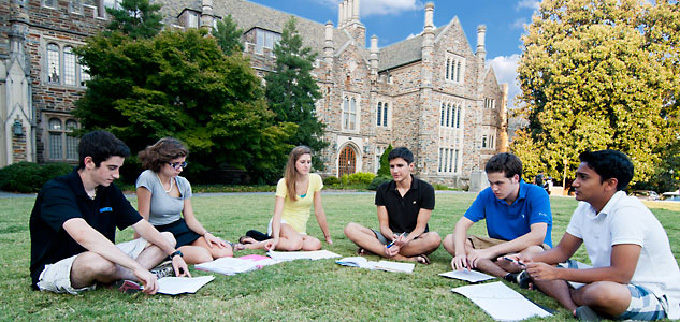
Despite clear differences in research intensity, size and age, most of the 20,000 universities in the world share four common assumptions about how they deliver undergraduate education. Students generally attend campus; where fees are being paid, they are paid directly to the university; the default setting remains full-time study and all the credits for a qualification usually come from the same provider.
Predicting the future of a sector isn’t easy. After all, most of us are struggling to create free time rather than worrying about how best to spend the time saved by flying cars and domestic robots. Nevertheless, higher education does feel as though it is poised on the edge of a revolutionary period. Some institutions have tinkered with the four assumptions set out above, while others, such as Woolf University, are making more radical moves. It’s time to explore each of these assumptions in turn and see what lessons other industries might offer.
Today’s students, and their families, make major financial investment decisions when choosing where to go and what to study. The film business has faced a similar “place” challenge for at least two decades. In the not-so-distant past, if you wanted to see the latest release there was no choice but to travel, pay for a ticket and watch it on the big screen.
The advent of video rental and now streaming has fundamentally changed the assumption that the customer has to come to your premises. The result has been an arms race. Movie theatres introduced IMAX screens, reclining seats and 3D systems, while individual customers can mimic surround sound and the big screen in their own home.
In higher education, distance and online learning have thrived in the postgraduate market but most undergraduates aren’t yet making the decision to learn at home rather than paying the sticker price for the full campus experience. Perhaps because of this, universities and private firms are building student accommodation blocks on the basis that “place” will continue to be important.
A second assumption is that funding for a degree is a transaction between either the student or the government paying the university with the academic as a salaried employee. In sports and entertainment, the power of the individual has grown while that of the corporate provider has weakened. Image rights and royalties now tend to flow to a smaller number of elite performers meaning that a higher proportion of the “fee” flows direct to the “talent”.
The 20 teams in the English Premier League have a collective wage bill of a staggering £48 million per week. Star academics are well paid, but imagine a parallel YouTube world where the individual educator is selling their content direct to the student and keeping most of the fee. Surely that would be unworkable, but Woolf University is attempting to create a blockchain university with low operating costs and money flowing to individual academics for education delivery.
This links to the third assumption: that students study for the totality of their degree with a single provider. Yes, it is true that most institutions will accredit prior learning to enable students to transfer in from another university, but this is the exception not the norm. The music industry operated with a similar mentality when it required customers to buy the whole album until iTunes came along, allowing people to buy individual tracks. Since then, the ground has shifted again to subscription-based streaming from Spotify and other providers. What if you could build your own degree by choosing the best courses from a range of universities? In effect, you’d be creating your own academic playlist.
Finally, while postgraduate qualifications are more often studied on a flexible, part-time basis, most undergraduates are still full-time students. The introduction of graduate apprentice degrees is chipping away at the accepted norm of full-time study followed by full-time employment for first degrees. Indeed, UK universities minister Sam Gyimah has already said that three-year, full-time degrees should not be the norm and, of course, they aren’t in Scotland, where undergraduate degrees tend to take four years.
But a generation of students raised with the expectation that you can binge-watch an entire series on the day of its release, or just as easily pick something up seamlessly after a lengthy break might begin to think about their degree studies in the same way. The traditional television broadcasters have had to adjust their mindset in response to the bold strategic moves of new entrants such as Netflix. Could universities cope with a mix of starting points and a range of paces from binge educators to meandering laggards?
Where it gets really interesting is looking at the assumptions as an interlocking set. Ikea, Amazon, Google and other global behemoths came at established markets with a distinctive reconfiguration of the business norms used by existing providers.
Other sectors have said that it can’t happen here, but what if one university, a new entrant or an established player, were to revolutionise the higher education sector by offering more choice, more flexibility, lower cost and higher quality? Allowing students to pick and choose individual courses from leading experts at a range of universities, accrediting these to validate a degree that flexes from lightning quick to slow roast – depending on circumstances – and offering the option of dropping into and out of campus-based experiences as required. Then we’d all be losing sleep. Unless of course, we were working for the university that was reinventing the game.
Author Bio: Robert MacIntosh is head of the School of Social Sciences at Heriot-Watt University.